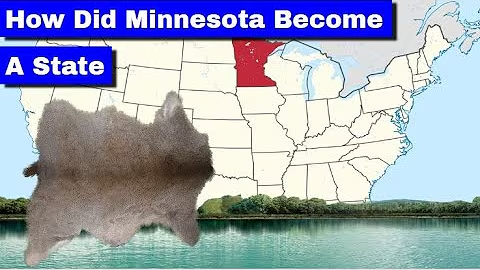The Sacred Stone and Ancient Trade
Before European settlement, the Dakota people lived in what is now Minnesota, along with other tribes. This land was a vital location for these peoples because of the Pipestone, or Katlenaut, found within the future state. Katlenaut, a deep red stone, was and is used to make ceremonial pipes. The stone’s value and rarity illustrate a sophisticated trade network: pipes made from it have been discovered in archaeological digs all over North America.
Fur, Forts, and the Zebulon Pike Problem
The first Europeans to enter the area were French fur traders. Eventually, Euro-American trappers and merchants arrived to capitalize on the fur trade, either by trapping themselves or relying on Native Americans to bring in furs in exchange for goods.
The United States made its first major move into the region in 1805 when Zebulon Pike explored the area. He signed a treaty with a group of Native Americans—though the circumstances are suspect, as Pike lacked the authority to strike such a deal—in which the Sioux Nation allegedly granted the U.S. land for military posts. This included land for a fort below the confluence of the Mississippi and St. Peters Rivers, extending up the Mississippi to include the Falls of Saint Anthony.
By the 1820s, Fort Snelling had been built on this land. The presence of the military brought more Euro-Americans, especially immigrants from Scandinavian countries, who were drawn by the opportunities provided by the growing settlement.
The Border Wars: Iowa and Wisconsin’s Land Grab
By the 1840s and 50s, the region now known as Minnesota had reverted to unorganized territory after Missouri became a state. The land soon became the target of its neighbors.
When Iowa applied for statehood, its delegates looked northward with strong economic interest, eyeing Minnesota’s healthy waterways. As one delegate explained, “The water power there is incalculable. It will run machinery of every description, and before many years, it will be one of the most important spots in the Western Country.” However, Iowa would not receive this bounty; Senator Stephen A. Douglas fixed Iowa’s northern boundary at the 43°30′ parallel in 1846.
Wisconsin, which became a state two years later, also attempted to claim parts of Minnesota, which would have effectively cut the modern state in half. When Wisconsin’s land grab was denied, the territory comprising modern Minnesota and the eastern parts of the Dakotas was left without a government.
A Territory Is Born: The Stillwater Convention
In 1848, a convention was called in Stillwater to organize the land as a territory. Sixty-one delegates signed a resolution establishing the Minnesota Territory, and Henry Hastings Sibley was chosen as their unofficial spokesman.
Despite the land being officially unorganized, Sibley won a questionable election, traveled to Washington, and was seated in Congress as the delegate of a territory that technically didn’t exist. Sibley advocated tirelessly for the residents, successfully pushing legislation to formally create the government. On March 3, 1849, the bill passed, and President Zachary Taylor appointed the territorial officials.
Alexander Ramsey, a 34-year-old Whig from Pennsylvania, became Minnesota’s first territorial governor. He established judicial and legislative districts, called for elections, and oversaw the creation of local governments, laying the foundation for a prosperous state.
A Population Boom and the Price of Expansion
Ramsey recognized that the presence of the Sioux tribe was a major obstacle to development. By 1851, treaties like the Treaty of Traverse des Sioux and the Treaty of Mendota opened millions of acres for settlement. Fur traders, especially the American Fur Company, heavily encouraged these treaties to collect hundreds of thousands of dollars in debts owed by Native Americans.
Fueled by policies like the Preemption Act of 1841, which allowed settlers to legalize land claims, Minnesota’s population exploded from roughly 20,000 in 1850 to over 150,000 by 1857. Cities like Saint Paul and Minneapolis grew rapidly as the territory became an economic and educational hub (the University of Minnesota was chartered in 1851).
The 32nd Star: Statehood Achieved
Political development advanced quickly alongside population growth. Delegates met in Saint Paul in 1857 to draft a constitution. Though initially divided along party lines, Democrats and Republicans produced a single document that prohibited slavery, guaranteed fundamental rights, and supported education.
The people ratified the constitution on October 13, 1857. Minnesota submitted the constitution to President Buchanan and, after national delays related to the debate over slavery, was officially admitted to the Union on May 11, 1858, as the 32nd state.
Minnesota’s journey from a Dakota homeland to a thriving territory and finally a state reflects the pioneering spirit, complex negotiations, and sheer determination that shaped much of America’s frontier history.

